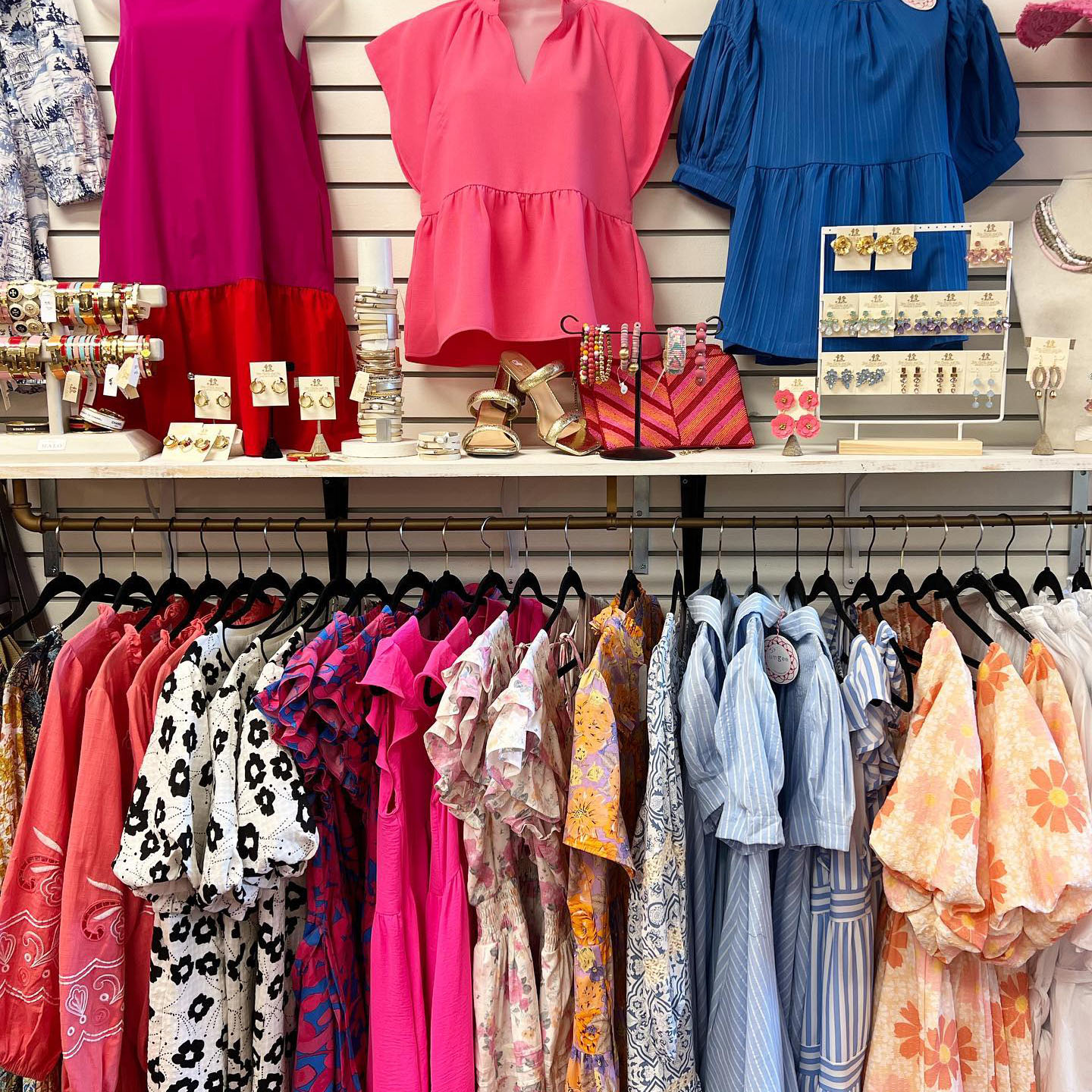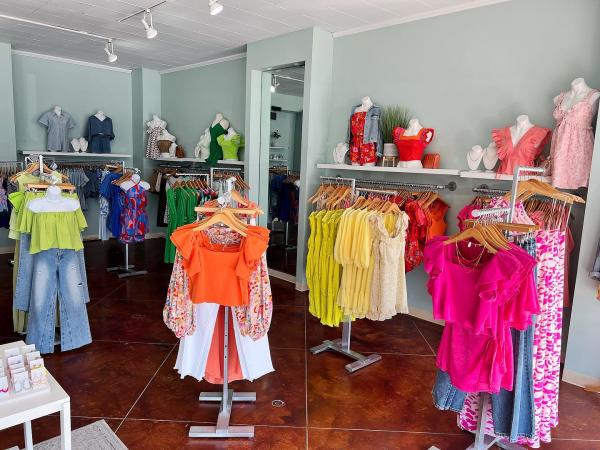The Surge of Online Shopping: Finding Boutique Fashion at Your Fingertips
Sustainable Fashion: Just How Eco-Friendly Clothes Is Forming the Future of Design
As the fashion industry deals with increasing scrutiny over its ecological impact, the rise of lasting fashion uses an encouraging alternative that straightens design with eco-friendly duty. boutique fashion. How does this motion absolutely affect the future trajectory of fashion, and what obstacles exist in advance in its prevalent fostering?
Cutting-edge Sustainable Products
As the style market faces its environmental effect, ingenious sustainable products have become an essential remedy for decreasing environmental footprints. Amongst one of the most promising materials are those stemmed from natural, sustainable resources, such as organic cotton, hemp, and bamboo. These products not only reduce dependence on nonrenewable fuel sources however additionally lessen dangerous chemical usage and water usage. Organic cotton, for circumstances, uses significantly less water than conventional cotton and gets rid of the need for harmful chemicals, consequently maintaining dirt health and wellness and biodiversity.
Along with plant-based materials, developments in biofabrication have caused the advancement of lab-grown fabrics. Mycelium natural leather, obtained from mushroom origins, provides a eco-friendly and functional choice to pet natural leather. Its manufacturing causes substantially lower carbon emissions and water use, making it an extra sustainable option for style developers looking for to line up with green practices.
Recycled materials are also obtaining traction, with polyester made from recycled plastic bottles standing for a significant innovation. This innovation not only draws away plastic waste from garbage dumps and oceans but also decreases energy consumption contrasted to generating virgin polyester. Together, these materials underscore the potential for an extra sustainable apparel industry, leading the means for environmentally aware layout and manufacturing.
Eco-Conscious Manufacturing
Structure on the technologies in sustainable materials, the fashion business is also re-evaluating its manufacturing processes to better lower environmental effect. Key methods consist of lessening water usage, decreasing carbon emissions, and removing hazardous chemicals. By taking on closed-loop systems, suppliers aim to recycle water and energy successfully, considerably lessening waste. The integration of renewable resource resources, such as solar and wind power, into manufacturing centers even more curtails reliance on fossil fuels.
Another vital facet is the decrease of hazardous chemicals traditionally made use of in dyeing and finishing textiles. Eco-conscious manufacturers are moving in the direction of plant-based dyes and waterless dyeing modern technologies, which not only safeguard local environments but additionally boost worker safety. Advancements like digital printing reduce fabric waste and power intake, supplying a cleaner option to standard methods.
With the improvement of blockchain innovation, companies can currently provide thorough insights right into their supply chains, ensuring honest and eco friendly techniques at each action. As the need for eco-conscious items expands, suppliers are compelled to introduce, making certain that the future of style is both stylish and sustainable.
The Rise of Upcycling
Upcycling, a transformative technique in sustainable style, involves artistically repurposing thrown out products right into brand-new, high-quality products. This innovative technique not just lowers waste however additionally decreases the demand for basic materials, consequently reducing the ecological influence of apparel manufacturing. By reimagining and reconstructing existing items, designers and style brand names have the ability to infuse creativity into their collections while advertising ecological obligation.

Additionally, the upcycling movement has actually empowered small companies and independent developers, that frequently lead in development because of their site here dexterity and creativity. By taking advantage of the plentiful accessibility of extra materials, these entities contribute to a circular economic climate, showing that style can you could look here be both sustainable and fashionable. Via upcycling, the industry takes significant strides towards a more aware and liable future.
Thrift Culture's Impact
The blossoming thrift society substantially reshapes the landscape of lasting style, stressing the relevance of conscious usage. This cultural shift encourages customers to welcome pre-owned clothes, consequently lowering the need for brand-new garment manufacturing and lessening ecological effect. Second hand buying not only expands the lifecycle of clothing however also lowers the carbon impact connected with manufacturing, transferring, and getting rid of garments.
A vital element of second hand society is its democratization of style. By supplying a vast array of styles from numerous eras at budget-friendly costs, thrift shops make fashion available to a wider target market. This access fosters a sense of uniqueness and creative thinking, as customers mix and suit special pieces to curate individualized wardrobes without adding to the rapid fashion cycle.
Furthermore, second hand culture advertises circularity in style, lining up with the principles of a round economic situation. As even more customers and designers welcome thrift society, the style market is urged to adjust, integrating lasting practices to fulfill the growing need for eco-conscious options.

Future Trends in Fashion
Style's development is progressively formed by technical technologies and sustainability-driven efforts. As customers end up being extra environmentally aware, the market is reacting with groundbreaking developments that redefine the future of design. One famous pattern is the rise of digital style, where online garments can be put on in augmented reality environments, dramatically minimizing textile waste. This change not only accommodates the digital-savvy customer yet also reduces the environmental footprint generally connected with garment production.
Additionally, the integration of blockchain modern technology uses new possibilities in transparency and traceability, enabling customers to confirm the sustainability qualifications of their apparel. boutique fashion. This guarantees accountability in supply chains and advertises moral sourcing methods. 3D printing is yet one more development that guarantees to change producing procedures by allowing on-demand manufacturing, therefore minimizing excess supply and waste
In addition, the advancement of bio-fabricated materials, such as lab-grown leather and plant-based fabrics, presents sustainable options to standard materials. These developments reduce reliance on pet products and resource-intensive crops. As these modern technologies develop, they are positioned to additional resources change the fashion landscape, merging design with sustainability. The future of fashion, therefore, depends on a smooth mix of innovation, technology, and environmental obligation.
Verdict
The makeover of the fashion business via lasting techniques indicates an essential change in the direction of ecological accountability. The assimilation of innovative products, eco-conscious production strategies, and the embracement of upcycling and second hand culture highlights a commitment to reducing eco-friendly impacts. As these methods get energy, they redefine the market's story by prioritizing lasting and moral selections. This evolution not only lines up fashion with ecological sustainability yet additionally establishes a precedent for future fads concentrated on duty and advancement.
As the fashion industry deals with boosting examination over its ecological impact, the surge of sustainable fashion uses an appealing alternative that aligns design with ecological obligation.As the fashion sector grapples with its ecological impact, cutting-edge lasting products have arised as a critical remedy for lowering ecological footprints. With each other, these products highlight the possibility for a more sustainable style sector, paving the way for ecologically conscious layout and production.
Building on the developments in lasting materials, the fashion market is additionally re-evaluating its manufacturing procedures to better decrease environmental effect. boutique fashion.Upcycling, a transformative practice in sustainable style, includes artistically repurposing thrown out materials right into new, high-quality items